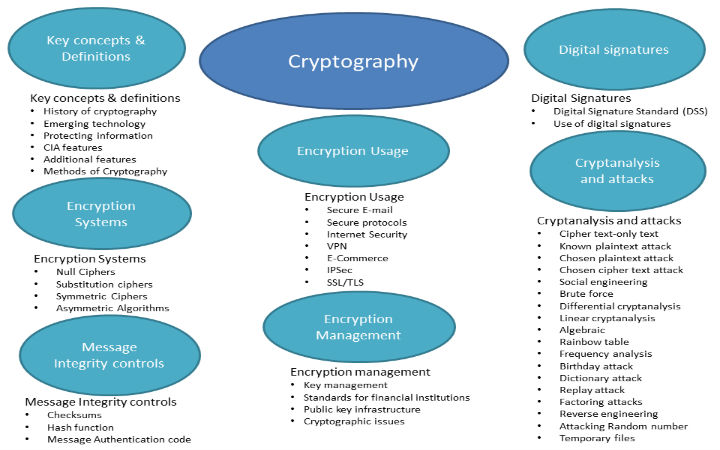Cryptography embodies the essence of secure communication, protecting our data amidst the din of digital interactions. For beginners, embarking on simple projects not only fosters a formidable understanding of cryptographic principles but also cultivates practical skills. Below is a meticulously curated list of engaging and accessible cryptography projects that serve both educational purposes and practical applications.
1. Caesar Cipher Encoder and Decoder
The Caesar cipher stands as one of the earliest and simplest forms of encryption. This project allows one to create an encoder and decoder for texts utilizing a fixed number of positions to shift letters in the alphabet. Through intuitive coding, users can develop a basic application that takes input text and applies the shift to both encode and decode messages.
To deepen the exploration, variations of the Caesar cipher can be examined, such as employing different shift values or introducing a user interface that beautifies the input process. Additionally, discussions regarding its historical utility and weaknesses can provide context and enhance understanding.
2. Vigenère Cipher Implementation
Advancing from the Caesar cipher, the Vigenère cipher employs a keyword to dictate the shift for each character. This provides a more robust encryption method, making it significantly more challenging to crack. This project entails creating an application where users input a keyword and a plaintext message. The program then generates the encrypted message based on the keyword.
By dissecting this method, one can engage in conversations about patterns and predictability in cryptographic systems. Exploring frequency analysis, for instance, can offer insights into how repeated keywords weaken encryption. This project is particularly effective in illustrating the evolution and challenges of cryptographic techniques.
3. Simple Substitution Cipher
This project involves designing an application that randomly assigns letters of the alphabet to other letters, effectively scrambling the original text. The user can input any message, and the application will return an encrypted version based on the letter substitutions. The decoder can also be implemented to unravel the encryption using the reverse mapping of letters.
Engagement with this cipher can further lead to discussions about the frequency distribution of letters in a given language, highlighting how such a naive substitution can be vulnerable to cryptanalysis. Such explorations can enhance one’s understanding of cryptographic strength and weaknesses.
4. Digital Signature Generator
This project delves into the concept of non-repudiation and authenticity. By creating a simple application that employs hashing techniques to generate digital signatures, developers can simulate how businesses and individuals ensure the integrity of their communications. Users can input text, which the application will hash along with a private key to produce a unique digital signature.
This project serves as a gateway to explain public key infrastructure (PKI) and the dynamic between public and private keys. The practical implications of such technology in real-world applications, such as software distribution and secure communications, reinforce the significance of these concepts.
5. File Encryption and Decryption Tool
Building a file encryption tool can profoundly familiarize users with concepts such as symmetric and asymmetric encryption. Users can select a file, apply a password for encryption, and download the encrypted version. Moreover, the tool can allow users to decrypt their files by inputting the correct password.
Engaging in file encryption can lead to discussions on current encryption standards, such as AES (Advanced Encryption Standard) and why certain algorithms are preferred depending on the context of use. This project lays the groundwork for understanding the necessity of robust encryption in the digital age.
6. Cryptographic Key Generation Utility
This project involves the construction of a simple utility to generate cryptographic keys of varying lengths and types. Users can choose parameters such as key length and algorithm type. The application can produce outputs in formats compatible with common cryptographic systems.
The significance of key management often surfaces during this project. Users will learn about best practices for generating, storing, and distributing keys securely. This knowledge is crucial for any cryptographer or developer in understanding the ecosystem of secure data transmission.
7. Secure Messaging Application
The culmination of acquired knowledge can be synthesized into a secure messaging application, where messages are encrypted end-to-end using the user’s selected algorithm. Here, one can explore different encryption methods such as RSA or ECC (Elliptic Curve Cryptography), building a user-friendly interface that allows sending and receiving encrypted messages.
This project provides a comprehensive understanding of not just encryption methods, but also the importance of user interface design and experience. Discussions surrounding potential vulnerabilities in messaging applications can be sparked, particularly regarding implementation flaws that can undermine cryptographic systems.
8. Educational Games Using Cryptography
Lastly, developing an educational game focused on cryptography can effectively engage users and reinforce their knowledge. This could involve quizzes or puzzles where players decode messages using different ciphers learned throughout the projects. By gamifying cryptographic concepts, developers can create an interactive learning space that intrigues and educates.
As users decode messages to progress in the game, they naturally engage with cryptographic principles. This method promotes retention and an intuitive grasp of how different ciphers function, making the learning process enjoyable.
In summation, these projects serve as stepping stones into the vast realm of cryptography. From simple shifting ciphers to complex secure messaging applications, each project offers unique insights and encourages practical application of cryptographic knowledge. The journey into cryptography is not merely about encrypting text but understanding its fundamental role in safeguarding our digital communications.








Leave a Comment